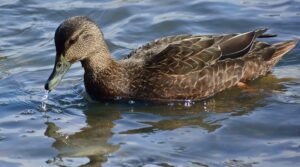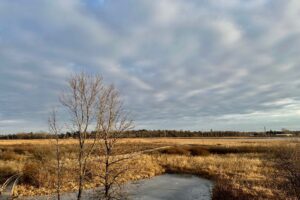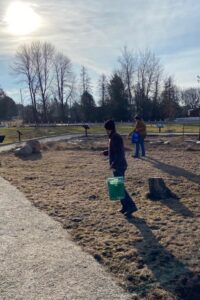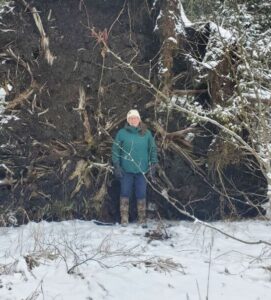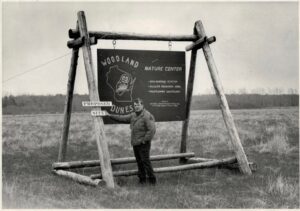 We’re golden! Woodland Dunes is excited to announce that we are celebrating our golden anniversary, 50 years! Throughout 2024, we’ll be sharing some stories and photos from our archives in honor of our great conservation and education successes. Today, we are sharing a portion of the very first newsletter that was sent out to our charter supporters.
We’re golden! Woodland Dunes is excited to announce that we are celebrating our golden anniversary, 50 years! Throughout 2024, we’ll be sharing some stories and photos from our archives in honor of our great conservation and education successes. Today, we are sharing a portion of the very first newsletter that was sent out to our charter supporters.
Here’s a little background – in the mid 70’s, a campaign called the “Bicentennial 40” was created in partnership by the Horizons Committee of the Manitowoc County Bicentennial organization and Woodland Dunes in order to acquire 40 acres of land for Woodland Dunes. This land-purchase campaign became successful through the committed works of school age children in Manitowoc County. The following is an excerpt from our first newsletter, dated October 1975.
“In August 1975, letters were sent to all school superintendents urging their support and participation so that their school will have its name on the permanent roster. To better explain the Bicentennial ‘40’ a month-long exhibit of maps, photos, and letters were set up at the Manitowoc Library.
Even before the teachers received word of this worthy project, several schools began raising money. By the end of May 1975, this Bicentennial program had received over $500 from five schools! These donated dollars came from personal contributions, collecting tin and aluminum, a bake sale, a car wash, a craft sale, etc… How wonderful it is to see young people working together to accomplish that which individuals working alone could not! Hats off to St. Mark’s, Roncalli, Meeme, Woodrow Wilson Jr. High, and Washington Jr. High!
The trail starts at Goodwin Road and proceeds approximately southwest into the center of the ’40.’ At this point, hikers must return via the same route since the boardwalk through the swampy area is not yet finished.
A large bulletin board sign welcomes visitors and shows the groups or individuals where they are within the much larger Woodland Dunes area. At this sign, a trail guide is available that will explain the wonders you’ll find along the trail. Numbered markers will help you along.
Barn beams have been donated for benches, and our helpful neighbor across from the entrance to the “Bicentennial 40” put them in position for anyone wishing to just sit and enjoy the sounds, sights, and smells of nature.
We welcome everyone to the Bicentennial 40!”
We are so grateful for the community rallying around us 50 years ago. What we’ve been able to accomplish since then is remarkable – 1,500 acres of land preserved and over 170,000 school children participating in our environmental education programs. Be watching for more historical stories and photos in the future to help us celebrate and honor our 50 successful years.
Photo: Dick Burger with sign made by Burger Boat employees at proposed Dunes site on Goodwin road.

